TOP 3 FUTURE ARCHITECTURAL PROJECTS
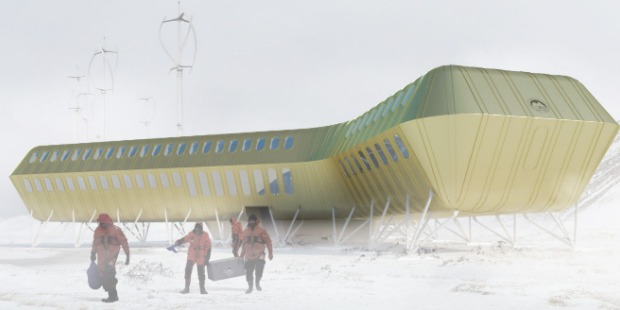
The World Architecture Festival has become one of the most significant architectural awards in the world. Each year, architects from a majority of countries compete for the prestigious awards with their ongoing future and completed projects. The three-day 2019 World Architecture Festival will be held from the 4th to the 6th of December in Amsterdam. As many as 534 projects from 70 countries have been nominated as the finalists in various categories for this year’s prestigious awards.
This year, the Super Jury comprises of eminent architects Francine Houben – Founder / CEO of Mecanoo architecten; Ben van Berkel – Founder / Principal Architect, UNStudio & Founder UNSense; Carin Smuts – Director, CS Studio Architects; Murat Tabanlioglu – Founding Partner, Tabanlioglu Architects; and Maria Warner Wong – Design Director, WOW Architects & Warner Wong Design. In total 48 speakers from all over the globe will provide their insight on the challenges and enlighten the audience at the annual awards’ ceremony.
Johnny D picks up ‘Top 3 Future Architectural Projects’ from the 534 finalists to elaborate on the projects’ magnitude and creativity. Italian Mario Cucinella Architects’ Fondazione Luigi Rovati Museum; Iranian architectural firm FMZD / Farshad MehdiZadeh Design’s Tehran Eye and Poland’s KURYLOWICZ & ASSOCIATES’ Henry Arctowski Antarctic Station are the three magnificent future architectural projects, which has caught the eye of the freelance international editor and interior designer.
FONDAZIONE LUIGI ROVATI MUSEUM
The Luigi Rovati Foundation desired to create a space to showcase their amazing Etruscan Art collections in the Fondazione Luigi Rovati Museum in Milan, Italy. The previous existing space required expansion in the existing building. An exclusive underground exhibition area was creatively designed by the Italian architect Mario Cucinella to display Etruscan vases and other spectacular art collections.
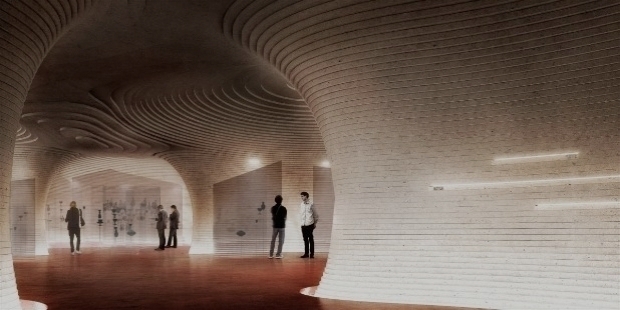
The project’s challenging task was to first expand the underground level of the property to construct the museum underground. The second challenge was to renovate the 19th Century Palazzo Bocconi-Rizzoli-Carraro to its past glory. The third challenge was to safeguard tree species of historical value in the large garden at the rear of the Palazzo, while maintaining its original character.
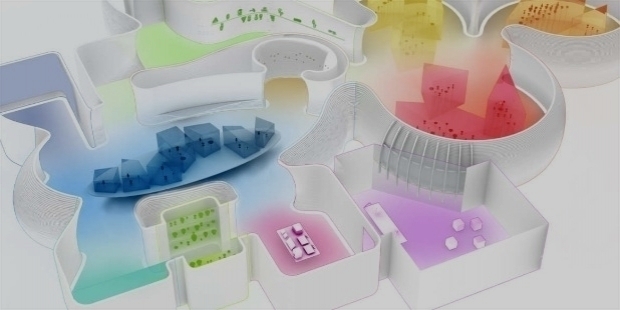
Mario Cucinella Architects started the project in the year 2016. In accord with the Superintendence for Architectural and Landscape Heritage, the landscape rehabilitation project was designed. Once the project is completed, it will be open for art lovers to cherish Etruscan vases and new art collections.
MARIO CUCINELLA
Mario Cucinella is a renowned multiple award-winning Italian architect. Mario Cucinella Architects was established in the 1992 in Paris. The design firm has offices in Bologna and New York. His design creations have been lauded in the design world for its sheer brilliance. Mario Cucinella is believed to be one of the undisputed global leaders in sustainable practices.
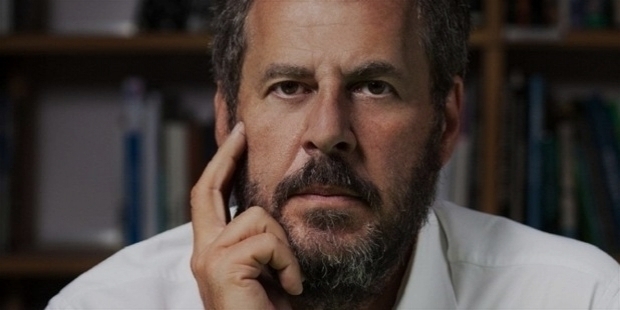
Mario Cucinella strongly believes, “Envisioning sustainable buildings means entering into an intimate relationship with the climate and with the concept of place. We have to imagine buildings that have only a minimum of visible technology, and maximize instead the efficiency of form, as materials change to become an active part in the final result, silently performing a task, a function, and becoming part of a new circular economy. This process seems to me to be a step closer to the complexity of nature rather than to that of mechanical artifice such that buildings will possess a high degree of empathy, a creative empathy.”
TEHRAN EYE
Tehran Eye project was commissioned to the architectural firm FMZD to design a façade, while reorganizing the existing expansive structure located in the Shariati Street in Tehran. The demanding task for Farshad Mehdizadeh was to redesign the performance of the structure from a packed shopping mall to a vertical street and be functional. Farshad’s creativity provides the main façade of the building as open public space, while providing the walkway to grow and pass into the entire structure.

The design creation has opened an expansive space and has become responsive to the city’s interactions. The new design works as a part of the street circulation and walkway vertical growth comprising small-scale shops and retails. Farshad’s design creations has greatly influenced and generated shopping street performances.
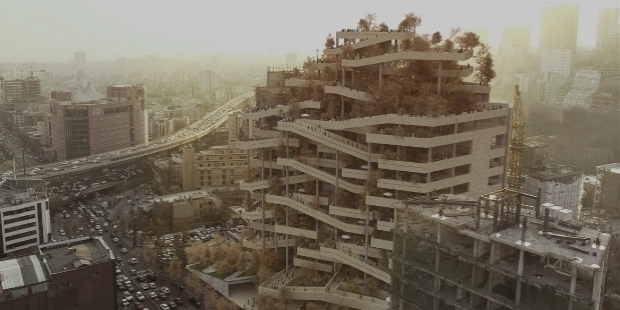
Now it allows people to ascend through a vertical street to the top for an amazing view of the city. The architect has functionally divided the whole space as indoors and outdoors.
FARSHAD MEHDIZADEH
The multiple award-winning Iranian architect Farshad Mehdizadeh has established as one of the prominent architects in Iran. Having completed his Masters from the Azad University of Isafahan in the year 2008, he started his architectural career with Fluid Motion Studio in Tehran. A year later, Farshad joined Lab Architecture Studio in Melbourne, Australia. In the month of October 2012, he established FMZD – Farshad Mehdizadeh Design in Tehran.
Farshad Mehdizadeh strongly believes, “In our opinion architecture cannot be designed outside of context, urban activities and relevant interactions. Actually, the context is what brings interactions and life into architecture and redefines the architectural elements. This leads us to design and define the border between the private and public domains. The context gets its particular character from defining the border between inside and outside, Public and private or architecture and metropolis in response to the situations around.
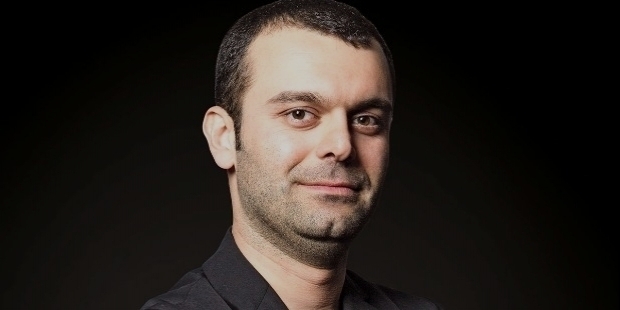
In all my projects, my practice has tried to realize architecture not as an icon added to a site, but as an extension or combination of behaviors, events and urban interactions which organize and manipulate the landscape. This is the way that we make our design more sustainable and related to the context. During these projects my design team has also focused on the context to use the local material, construction techniques and apply local and traditional construction workers who sometimes compel us to go to the site and teach them how to improve and apply their local techniques to the project.”
HENRY ARCTOWSKI ANTARCTIC STATION
The Henry Arctowski Antarctic Station project was commissioned to the Polish design firm Kury?owicz & Associates. The challenging task at hand is to facilitate quick construction, which will be able to withstand the harsh climate of the Antarctic. The station will be built on the King George Island in Antarctica.
The research centre will be constructed in a prefabricated structure with golden-colored metal cladding. The challenging task of the project is to design the station, which will be shaped by complex functional program and the extreme environmental conditions of the site. The next challenge was to follow a modular construction strategy imposed by site access restrictions. The station will have space to accommodate 29 scientists.
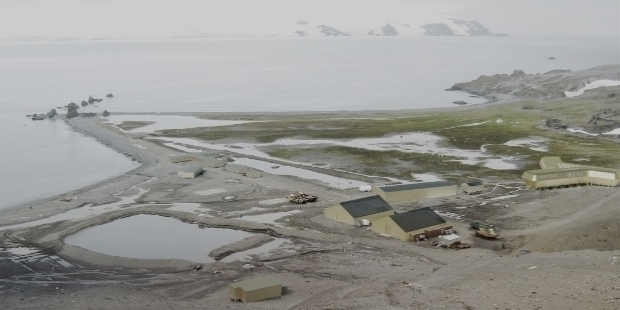
The next design challenge was to create an efficient functional research space, while providing the ambience of a home away from home. At the same time, the exterior should capture the mystery of the arctic life and landscape. The 3-metre elevated Henry Arctowski Antarctic Station is designed to imitate an upside-down aircraft wing to keep it firmly on the ground, while reducing its impact on the beautiful landscape.
The station has been designed brilliant to provide a lecture hall, laboratories, a gym, a sauna and private accommodations for the research staff. A greenhouse to grow produce is the highlight of the design. Large windows will provide ample natural light and panoramic views of the beautiful landscape surrounding the station. Every single aspect of functionalities has been thought of while designing the project. A series of wind turbines will provide the power.
Dr. EWA KURY?OWICZ
Dr. Ewa Kurylowicz is the Vice President of Polish architectural firm Kurylowicz & Associates based in Warszawa, Poland. She has held the position since 2011 and is also the Designer of the Studio. Dr. Ewa heads the Independent Section of Design and Theory of Architecture at the Faculty of Architecture of Warsaw University of Technology.
In the year 1977, Ewa Kurylowicz completed her B. Arch from Warsaw University of Technology In the year 1982 she completed her Doctorate from Warsaw University of Technology. She submitted her post-doctoral dissertation in the year 1997. From 2014 onwards, she has been teaching architectural students as a Professor.
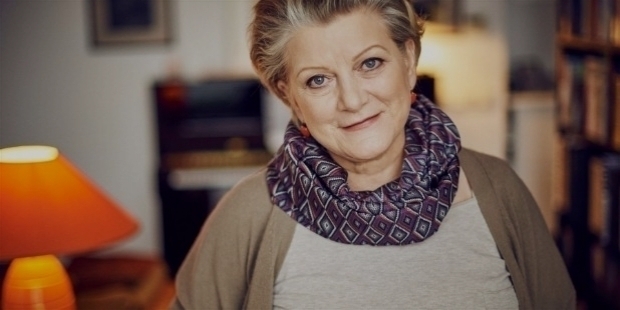
Dr. Ewa Kurylowicz strongly believes, “The good change is noticeable due to the fact that there is evil in the world. There is more evil, this is how our world is. But maybe you have to say it out loud: good doesn’t exist without evil. And this translates very much into architecture. Architecture for a good life is not didactic, that it shouldn’t force people to do anything and that you can do many things with a smile.”









